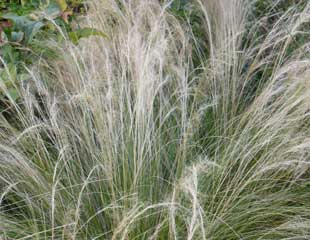
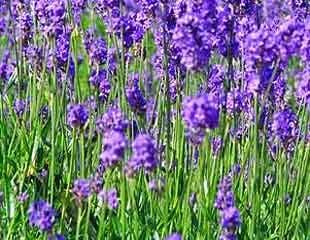
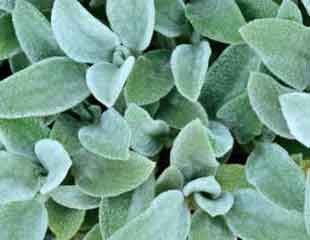
Create A Calming Sensory Garden to Reduce Stress and Anxiety
To create a calming sensory garden, the planting needs to appeal to our senses through touch, small, sight and sound.
A sensory garden can reduce stress and anxiety with plants which are attractive to touch and stoke, and also plants such as lavender and rosemary whose scent has a calming influence.
A sensory garden features plants, and flowers selected for their enjoyable textures and scents.
Since touch is important in a sensory garden, check out that none of the plants or shrubs you wish to plant can be toxic or cause skin irritation. The RHS has a comprehensive list.
Planting Ideas for Calming garden to Reduce Stress and Anxiety
Stachy byzantina
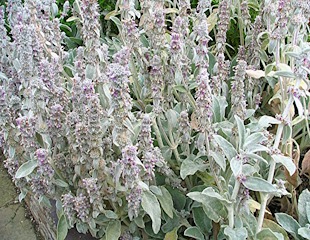
A great plant for a sensory garden, Stachys byzantina 'Big Ears' has lovely downy leaves which are irresistibly soft to touch. It will trail downwards if planted in a raised bed. Stachys only produce a single, soft flower spike with pale lavender flowers (which are very attractive to bees) but the leaves are soft and downy.
S.tennuissimatem
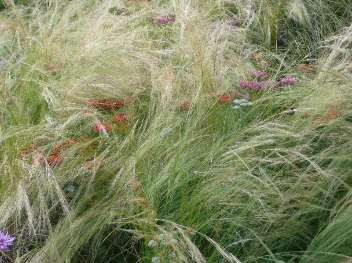
Grasses make a great addition in a sensory garden. Grasses create movement as they sway, dance and drift around on a breeze, which is relaxing to watch. In addition, many grasses have fluffy plumes which are tactile the touch.
Ideas for grasses and images to inspire along with planting combinations.
lavender
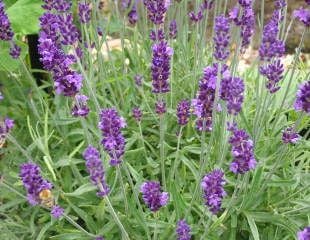
Scent is one of the most important factors in a sensory garden. Plants such as Lavender and rosemary are aromatic to the touch.
If planted along a path, visitors will brush along the plant, releasing the scent.
Pelargonium crispum

There are pelargoniums which have leaves scented to the touch. Good varities are crispum 'Variegatum', (lemon scented leaves) 'Fragrans', (pine scented) 'Graveolens' of gardens, 'Old Spice' (spicy scented) 'Prince of Orange', (orange scented) and many more. They are available from specialist growers. Pelargoniums are not hardy and must be overwintered in a frost free environment.
Hosta
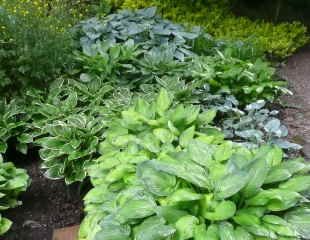
The simple lush foliage of Hosta is very attractive, especially when planted on mass. Here 5 different varieties are planted together to create a calm green pathway.
Chamomile
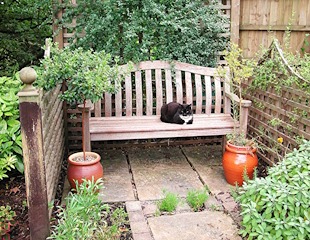
Most of us do not have space for a chamomile lawn, but there is room for cool and calming patch. This shady seating area has a couple of chamomile plants, so you can take off your shoes and feel the Chamomile grass. Had I stayed in this house, I would have extended it to a larger patch as a cool foot rest.
Honeysuckle
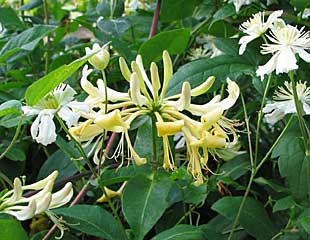
Inhaling the fragrance of a sweetly scented plant, is has a calming effect.
There are few plants with a sweeter scent than honeysuckle often combined with roses for a winning scented combination.
A Sea of Grasses
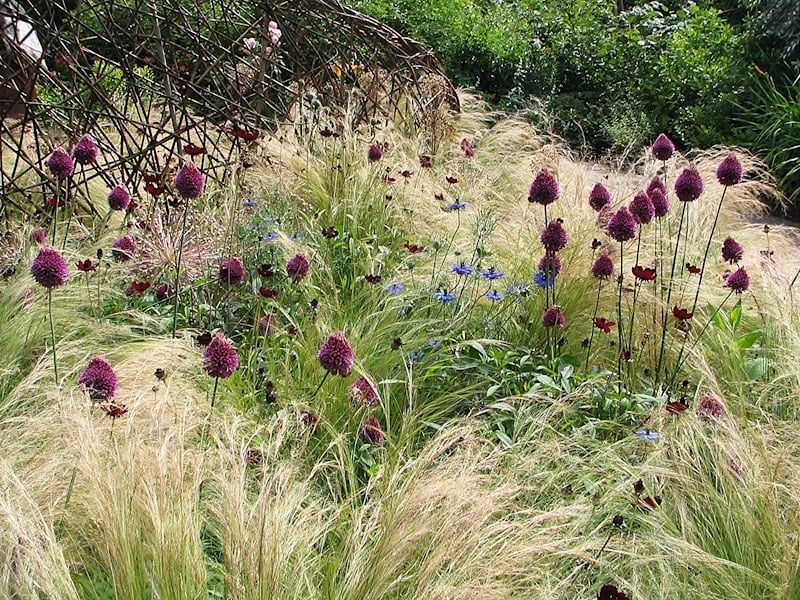
I took this image at RHS Harlow Carr. The planting combination includes stipa tenuissima with its fluffy plumes, the late flowering Allium sphaerocephalon, Blue Nigella and chocolate Cosmos. Don't you just want to sit in the middle? With this combination, I add a mown path leading to a small seat in the centre when you could really relax and the sensory scheme.
A word about grasses
The image shows Stipa tenuissima with its soft fluffy plumes which just ask to be stroked. Grasses are tactile, some are soft and fluffy, others with plumes ideal for touch, which make them ideal a good addition in a sensory garden. Grasses move on the breeze and can move like waves. At Trentham Gardens in Staffordshire they have a river of grasses, where the grasses are planted on mass almost like a green river.
Suitable grasses are Stipa gigantea, and S. tennuissima, Deschampsia, Calamagrotis and the annual grass Briza maxima. There are more ideas and images on the Grasses page and on Pinterest Wonderful Grasses to see the various types, which really are great to the touch, and move with the breeze. If grasses alone appear too plain planted on their own, they also look good planted with Allium, Achillea, Crocosmia and the tall grasses look good with Thalictrum.
Scented plants are an essential part of a sensory garden. Below plants which flower and produce scent at different times of the year, suitable for planting in a sensory garden. There are, of course, many roses to choose from and the expert growers can always advise on roses, in addition, there are many plants with strong scent other than roses, which are easier to grow. The plants listed below are hardy. If space is limited, the same area of a garden can be used to create an area which is sensory, contains scented plants and includes many plants which are attractive to bees and butterflies. Many of the plants in the lists appear in all three categories.
Scented planting ideas for a Sensory Garden
Winter scent
Mahonia japonica and x media ' Charity'
Hamamelis x intermedia 'Jelena'
Winter flowering Honeysuckle, Lonicera fragrantissim
Sarcococca common name Sweet box.
Late summer autumn scent
Lonicera (honey suckle)
Sedum (for bees and butterflies)
Artemisia
Scented Clematis C. terniflora "Sweet Autumn"
A good addition to a sensory garden are those plants which attract bees, butterflies and birds to bring the garden alive. Many of the scented plants above are attractive to bees and butterflies. Suggestions for wildlife friendly plants, plants for bees and plants for butterflies.
